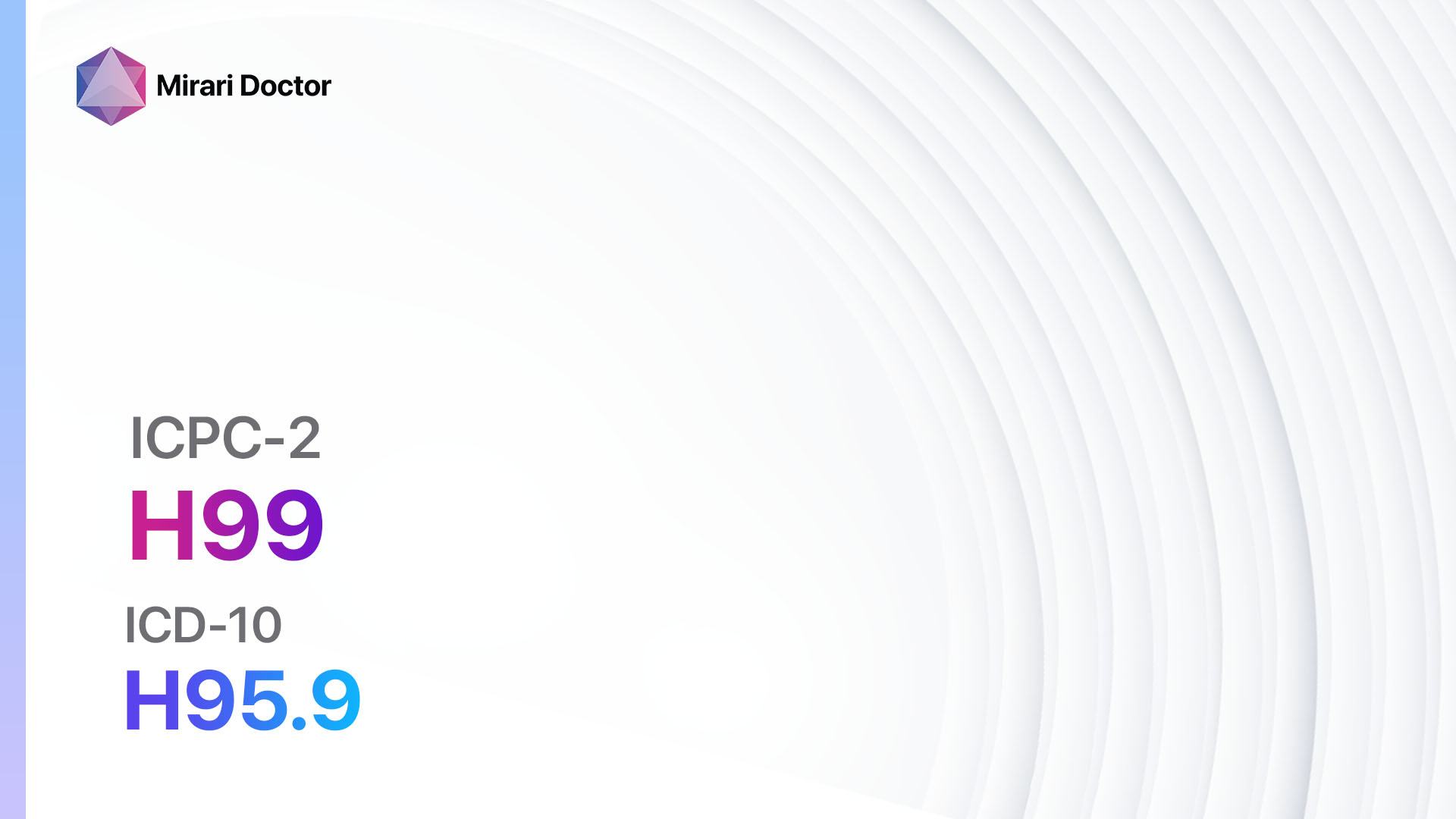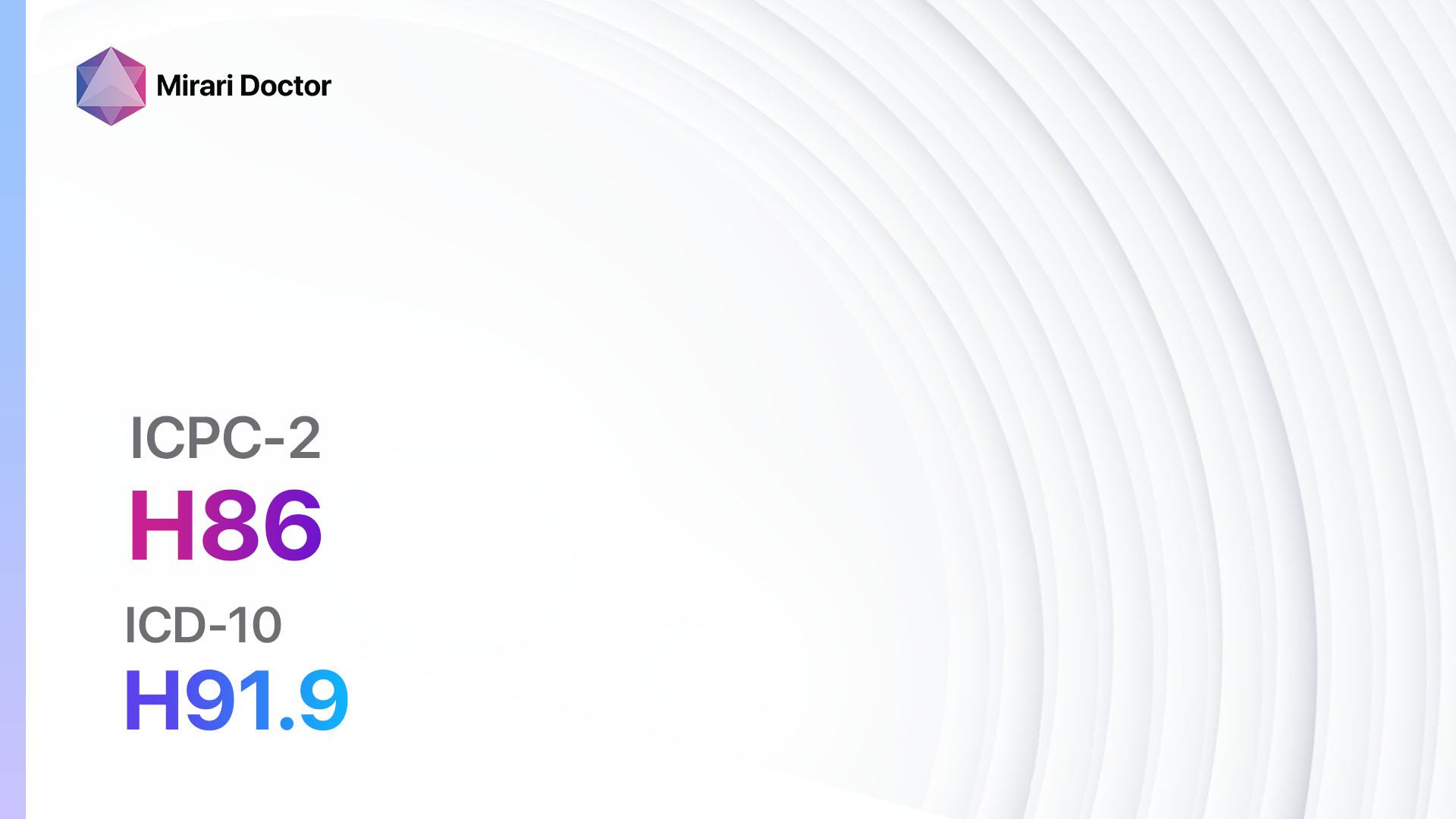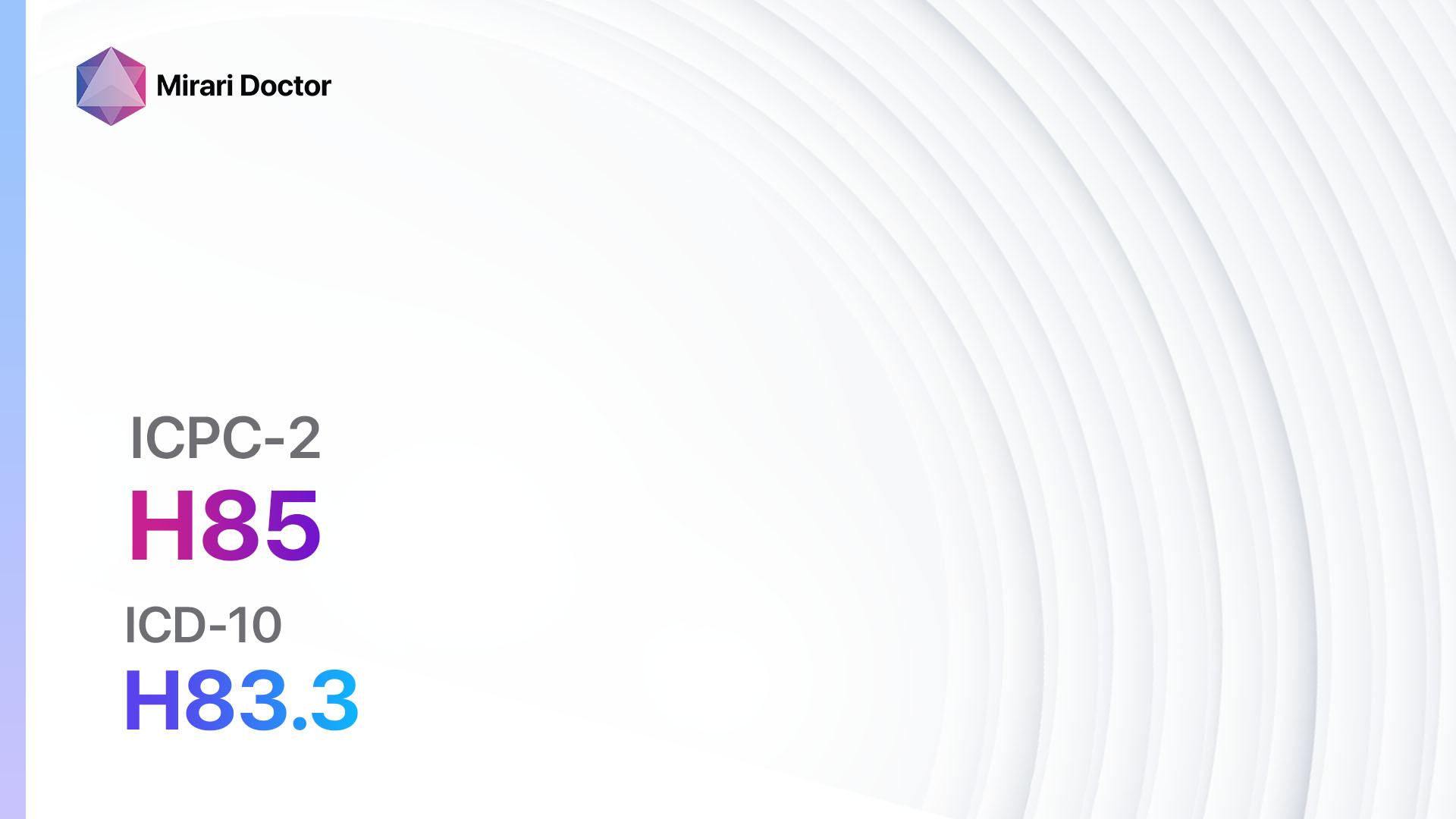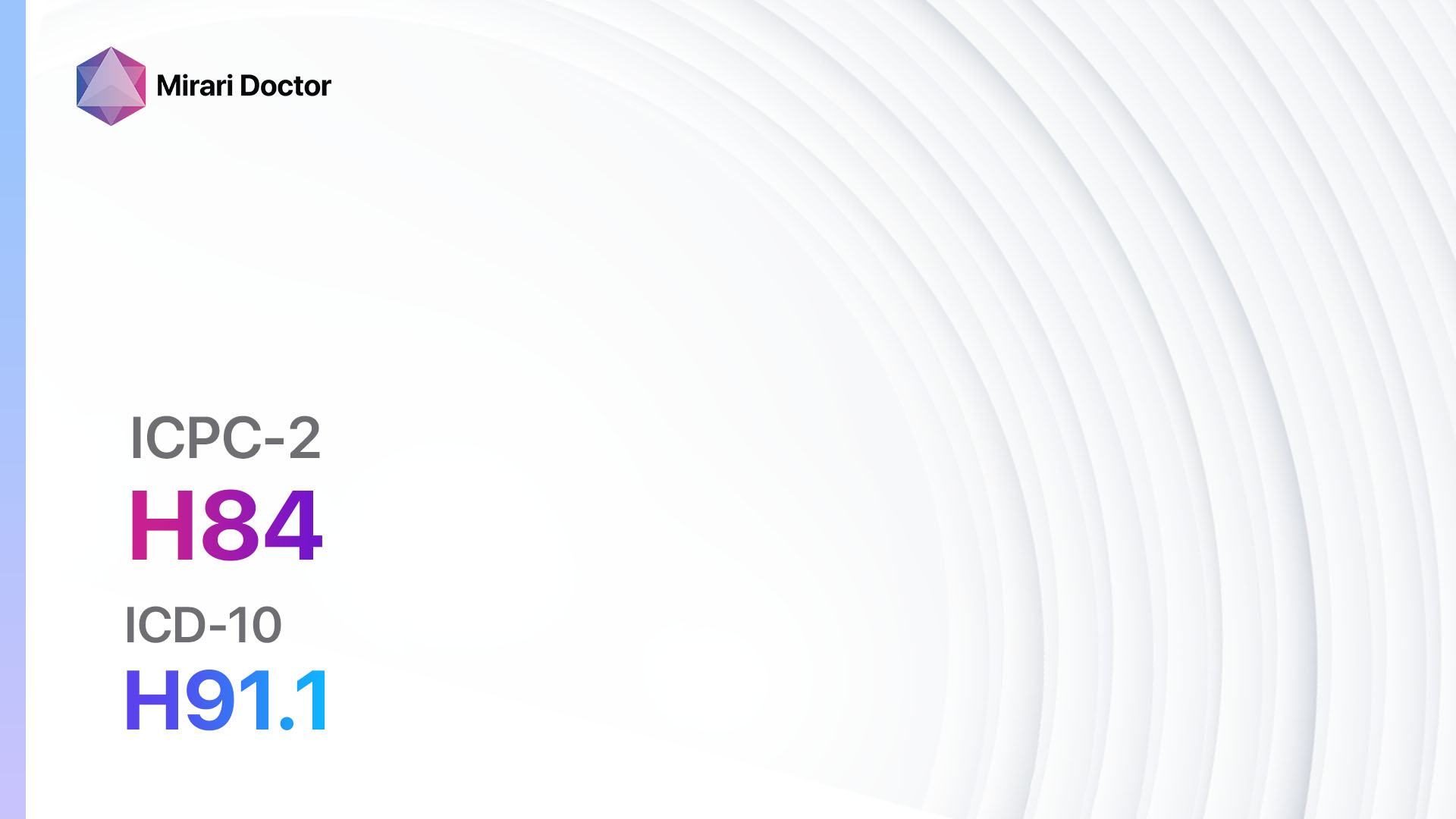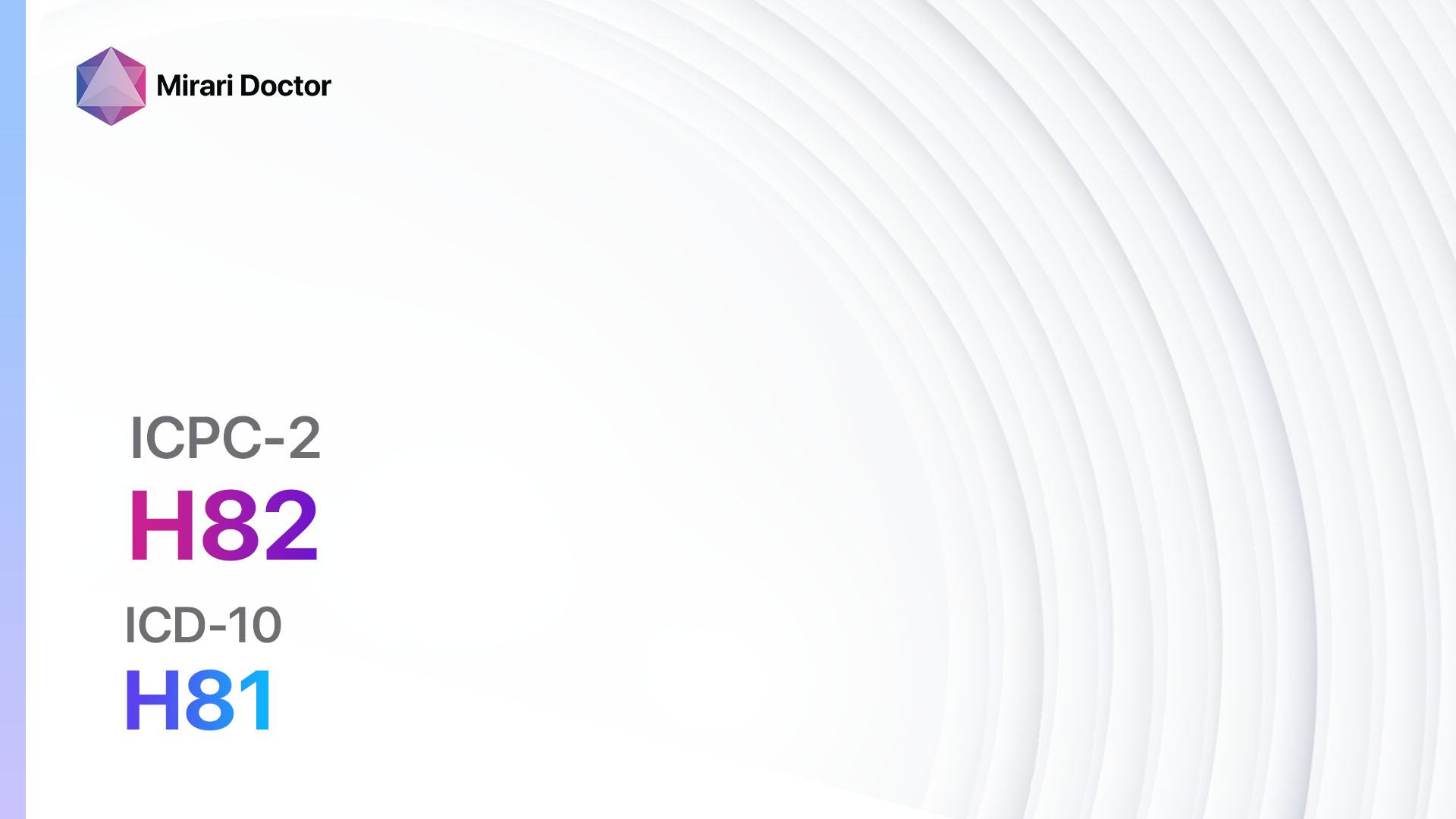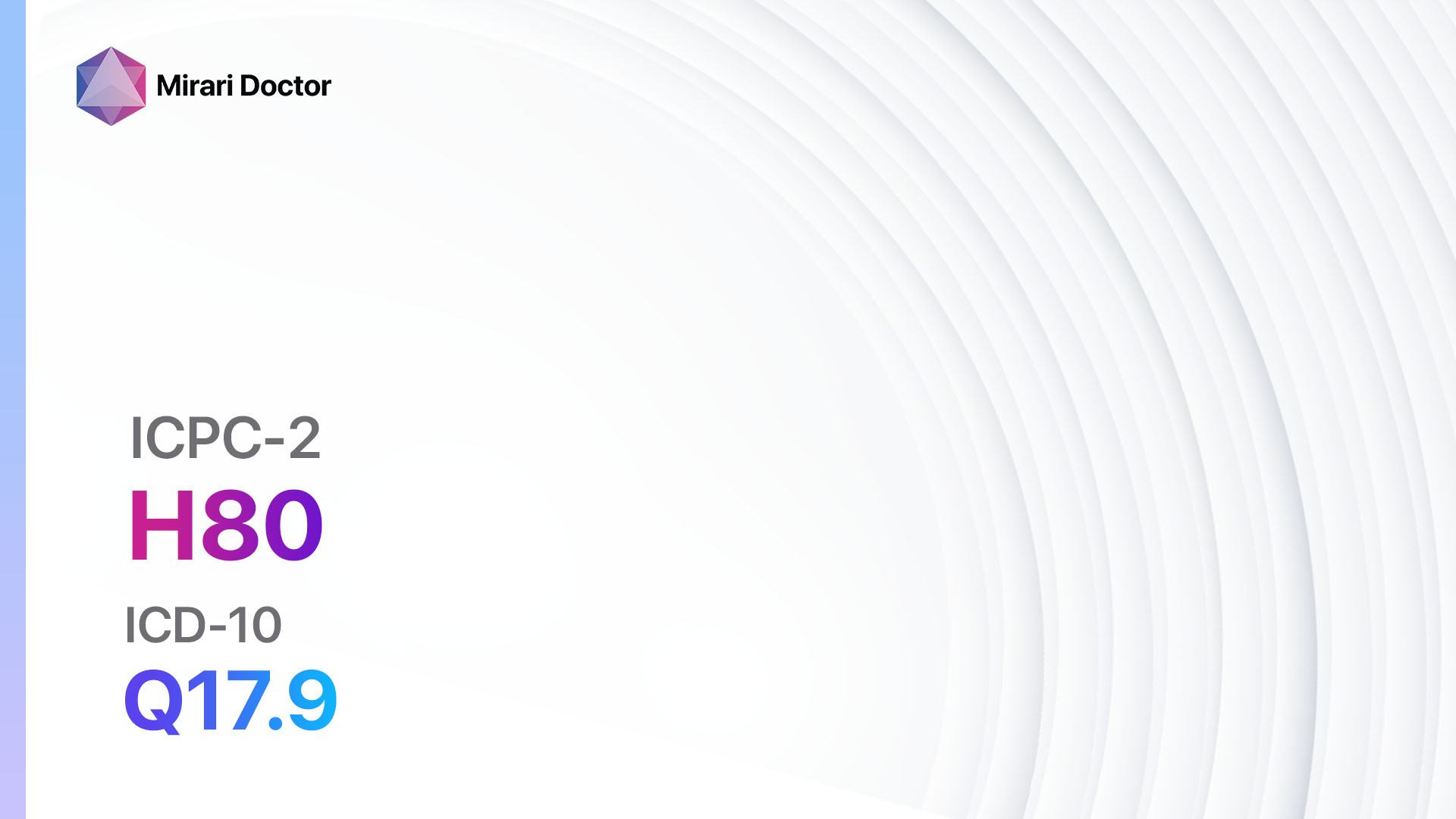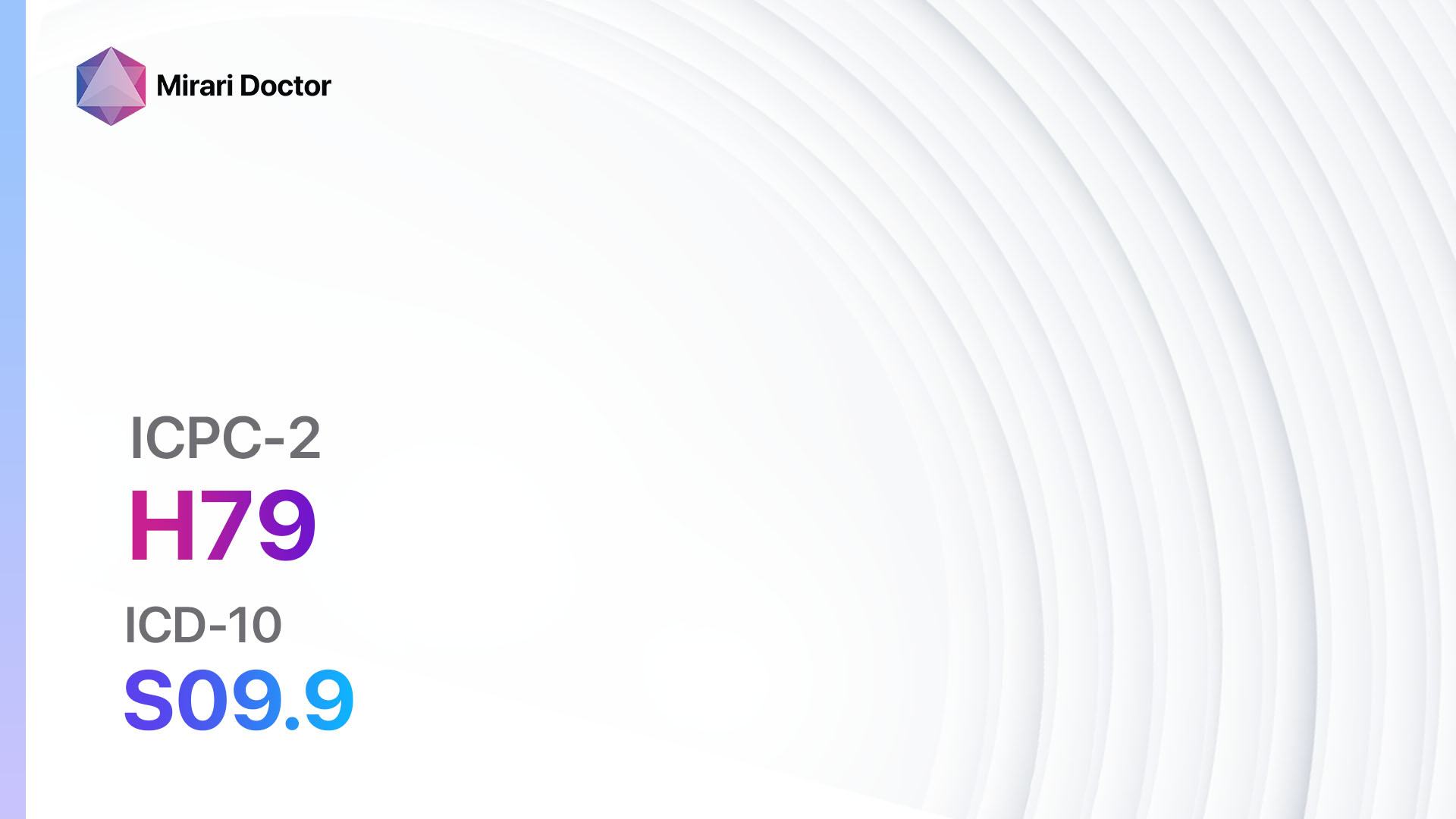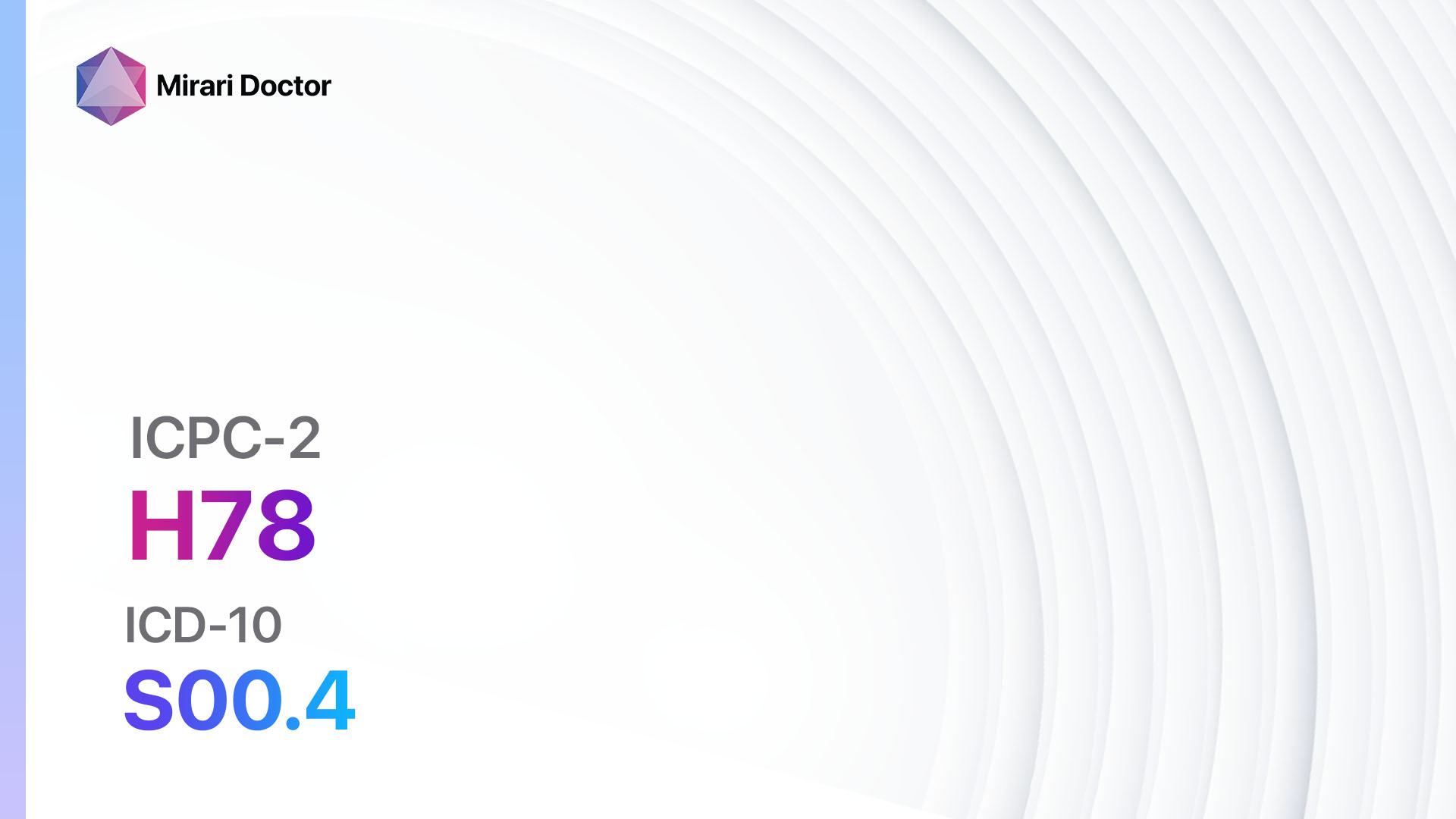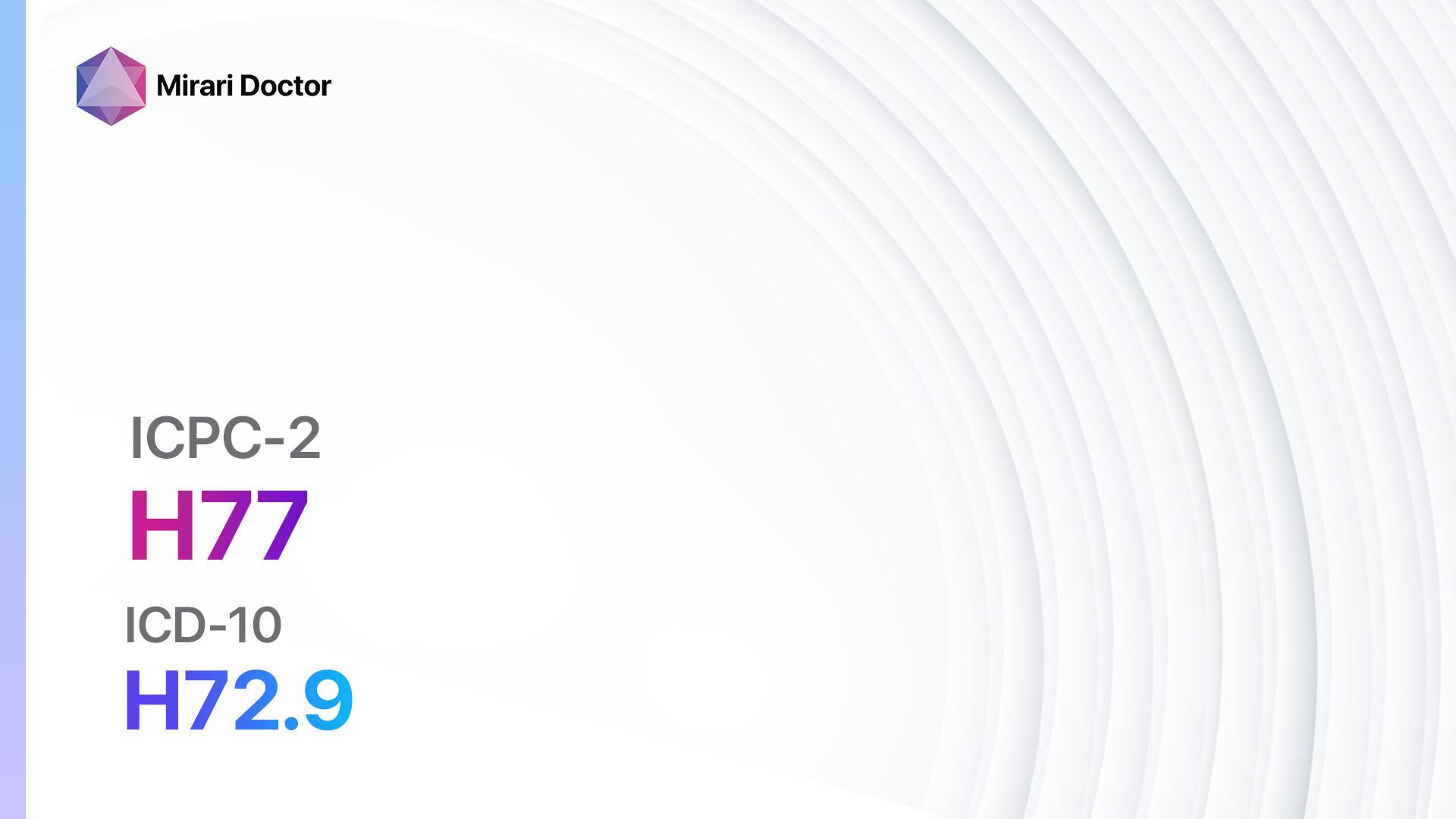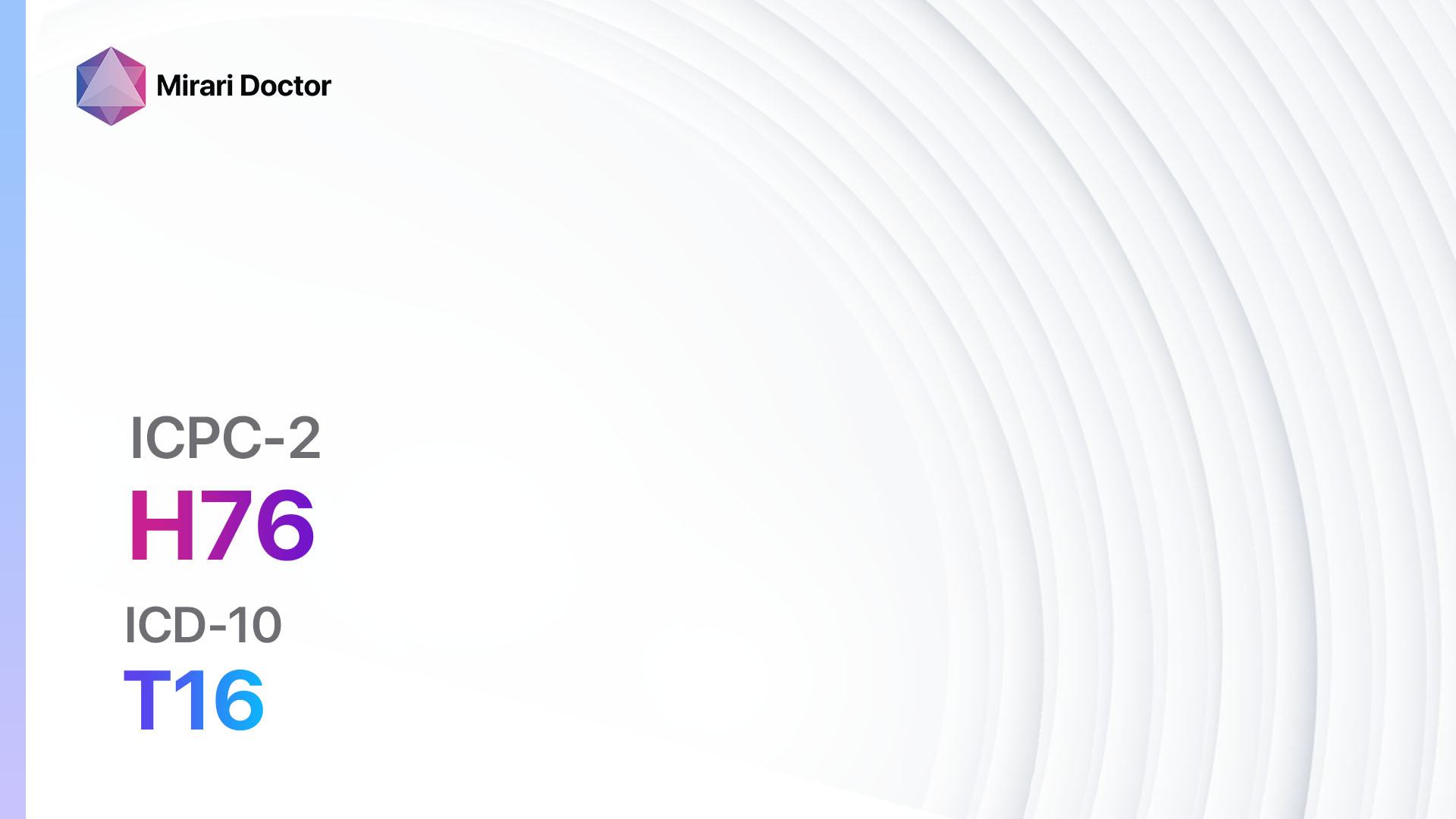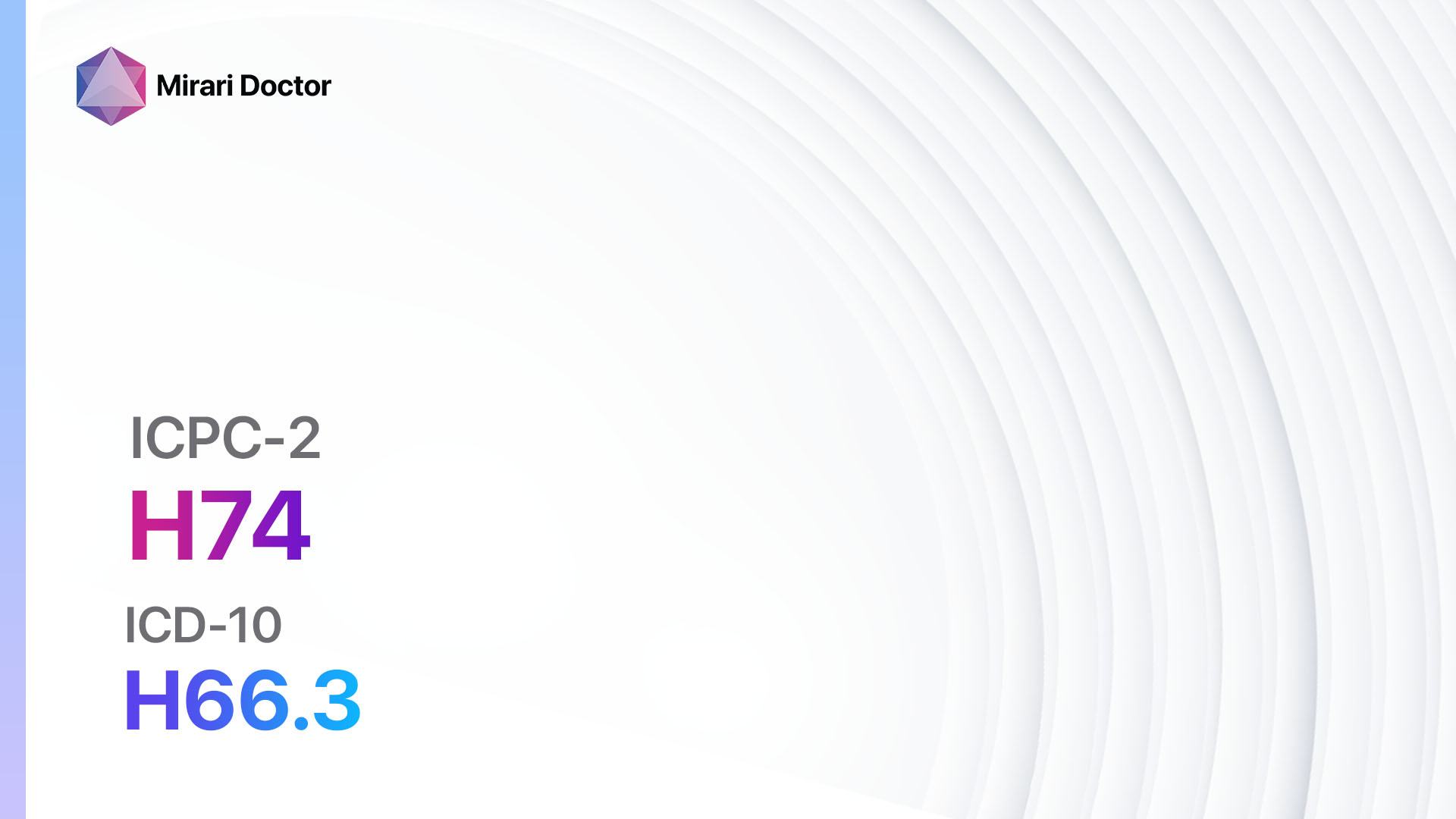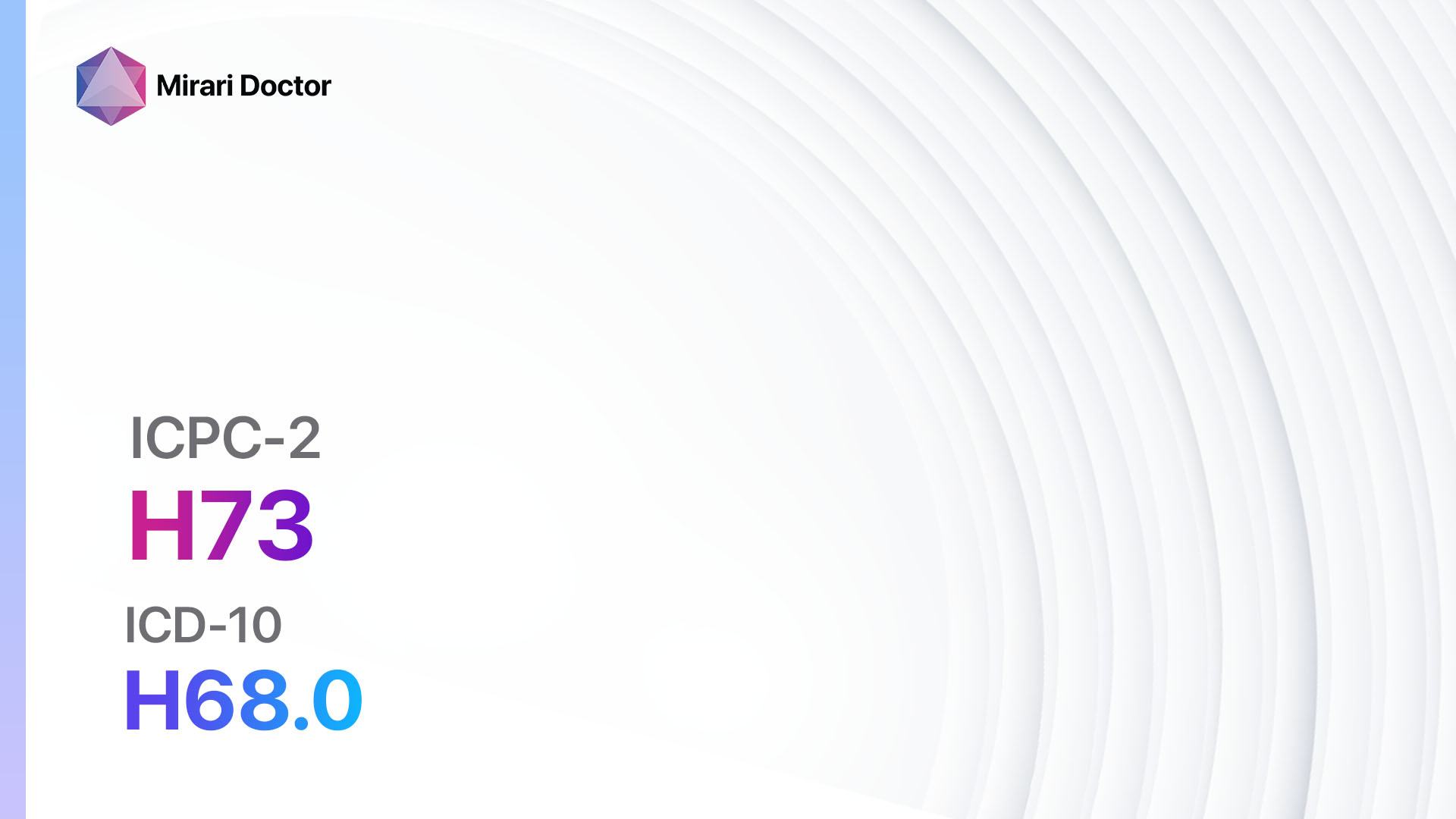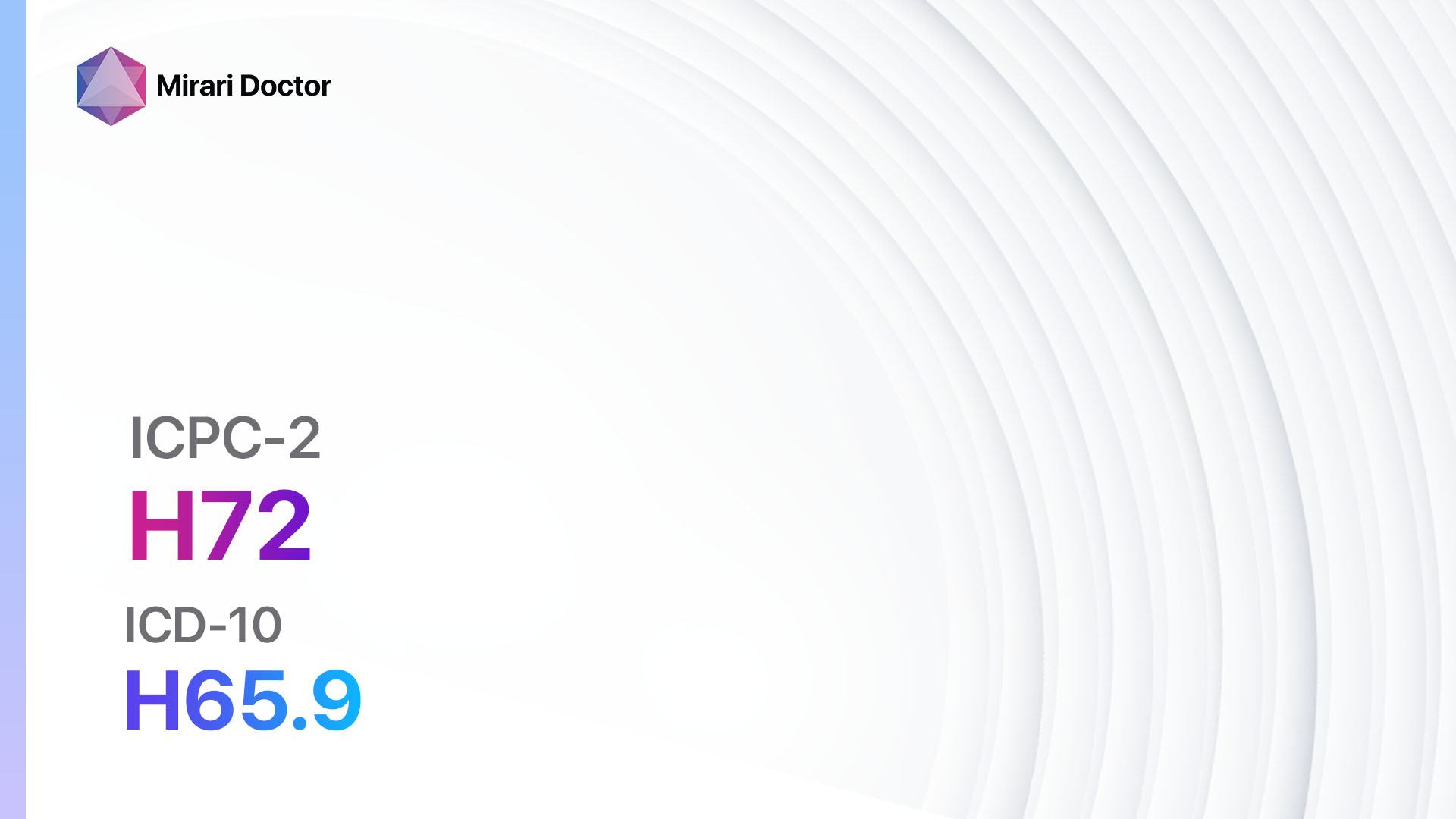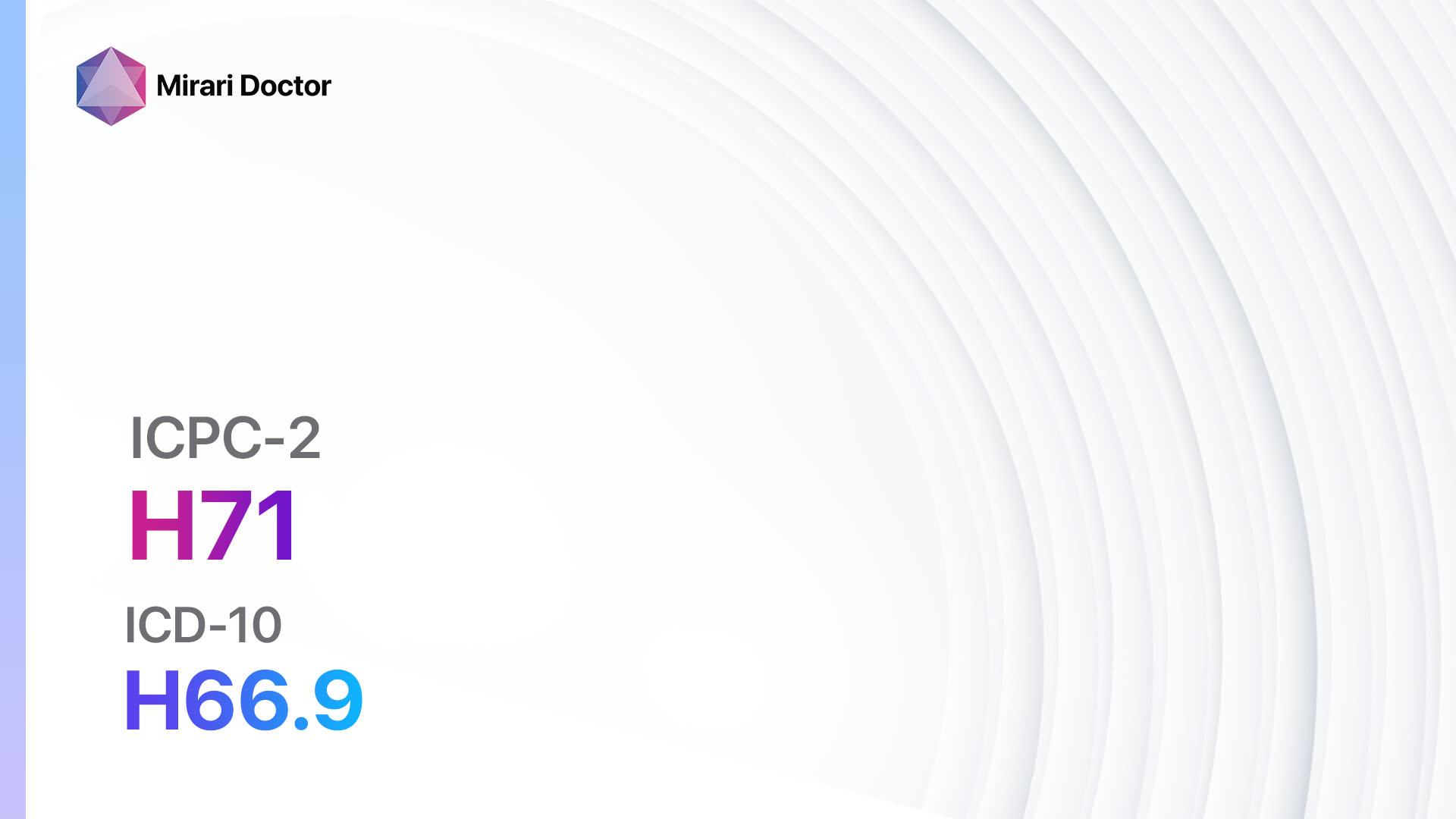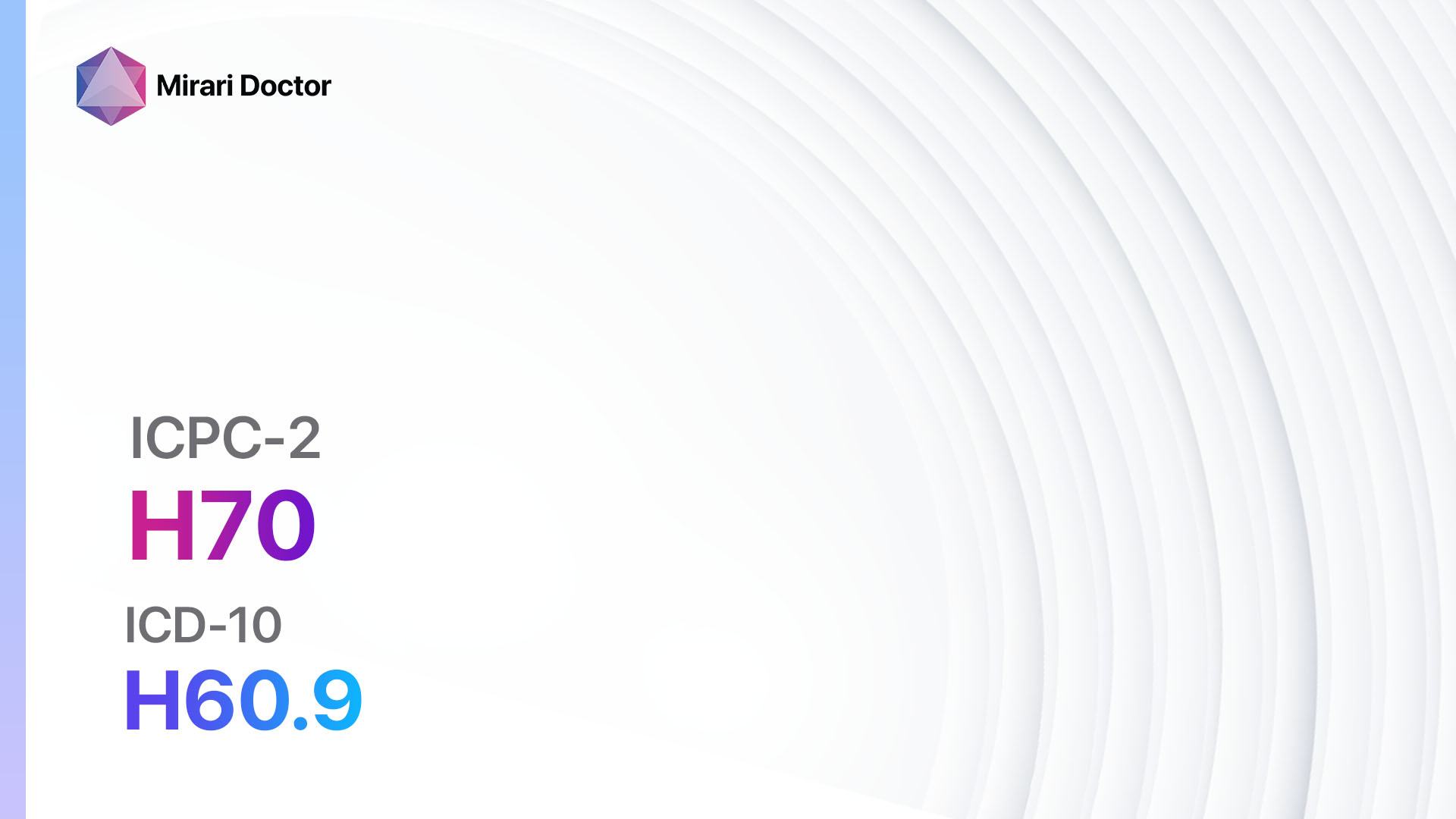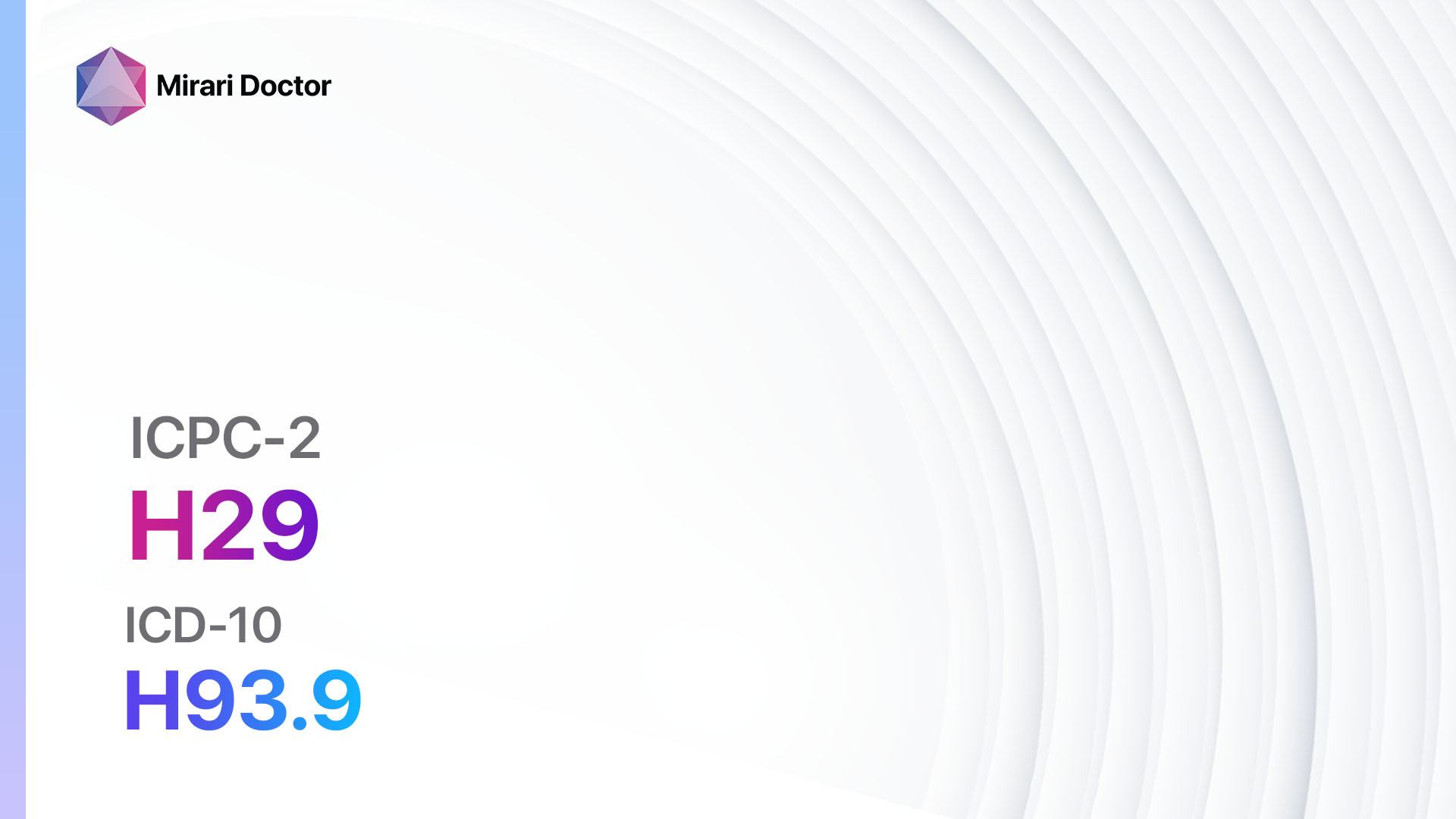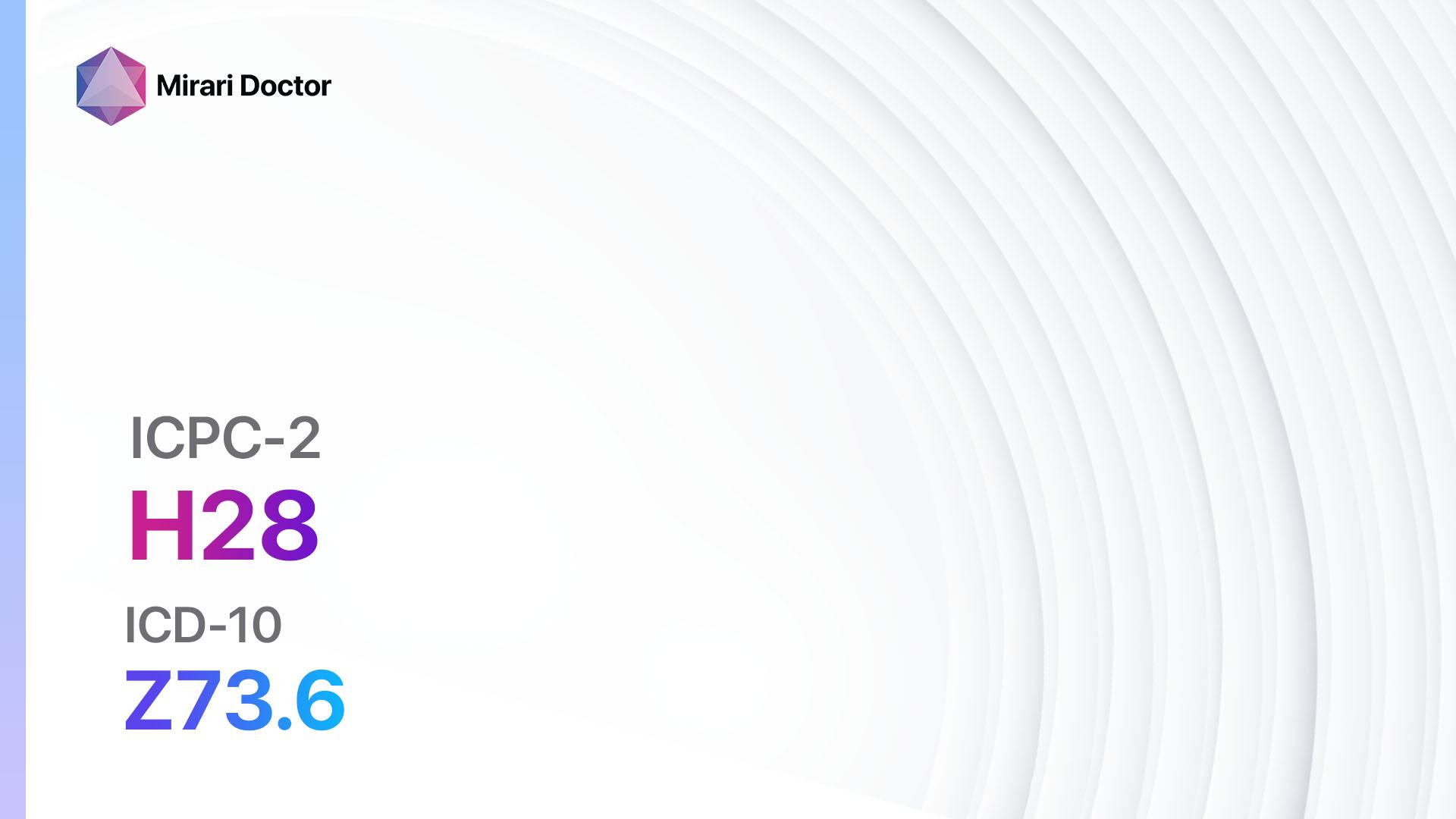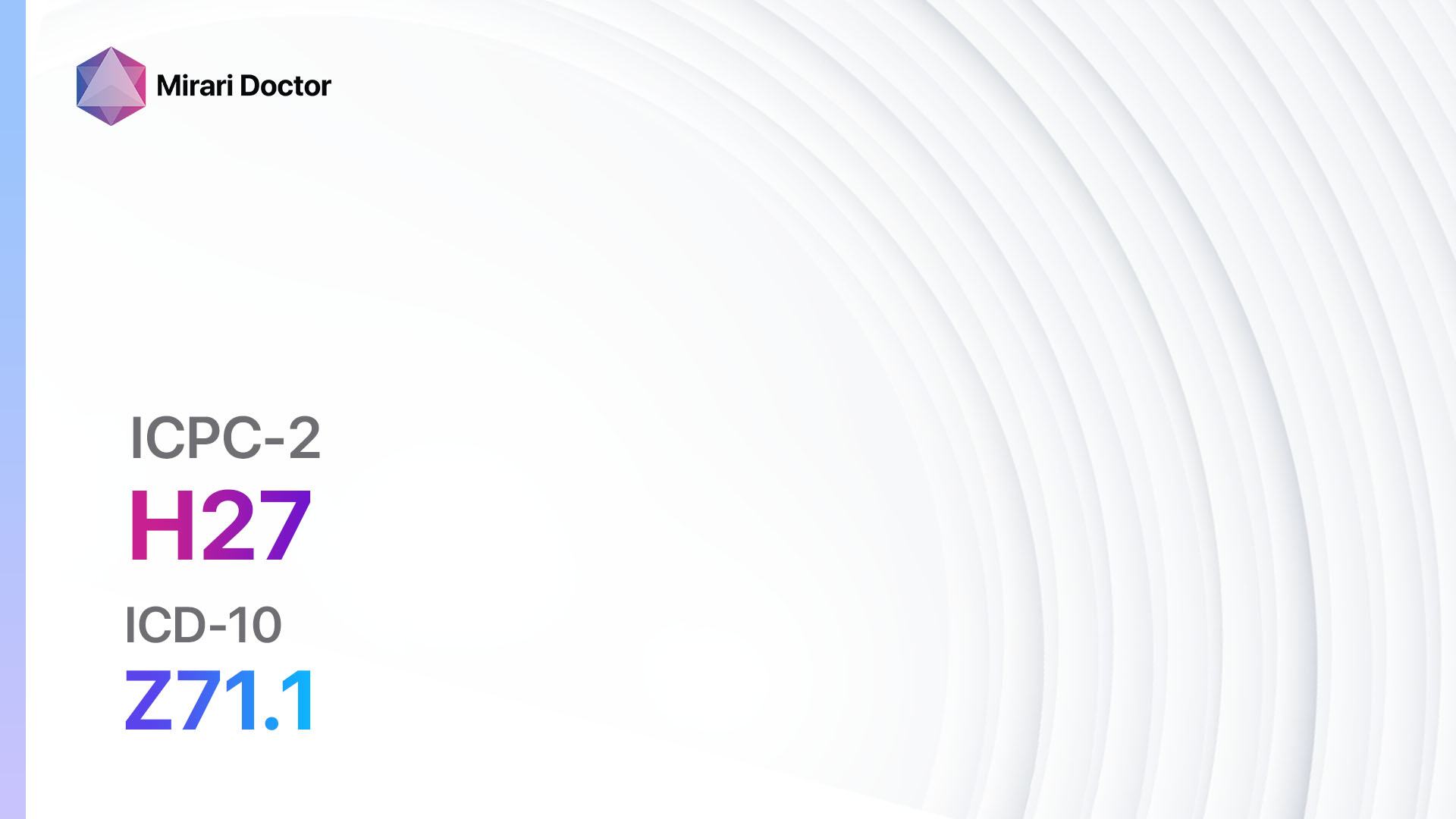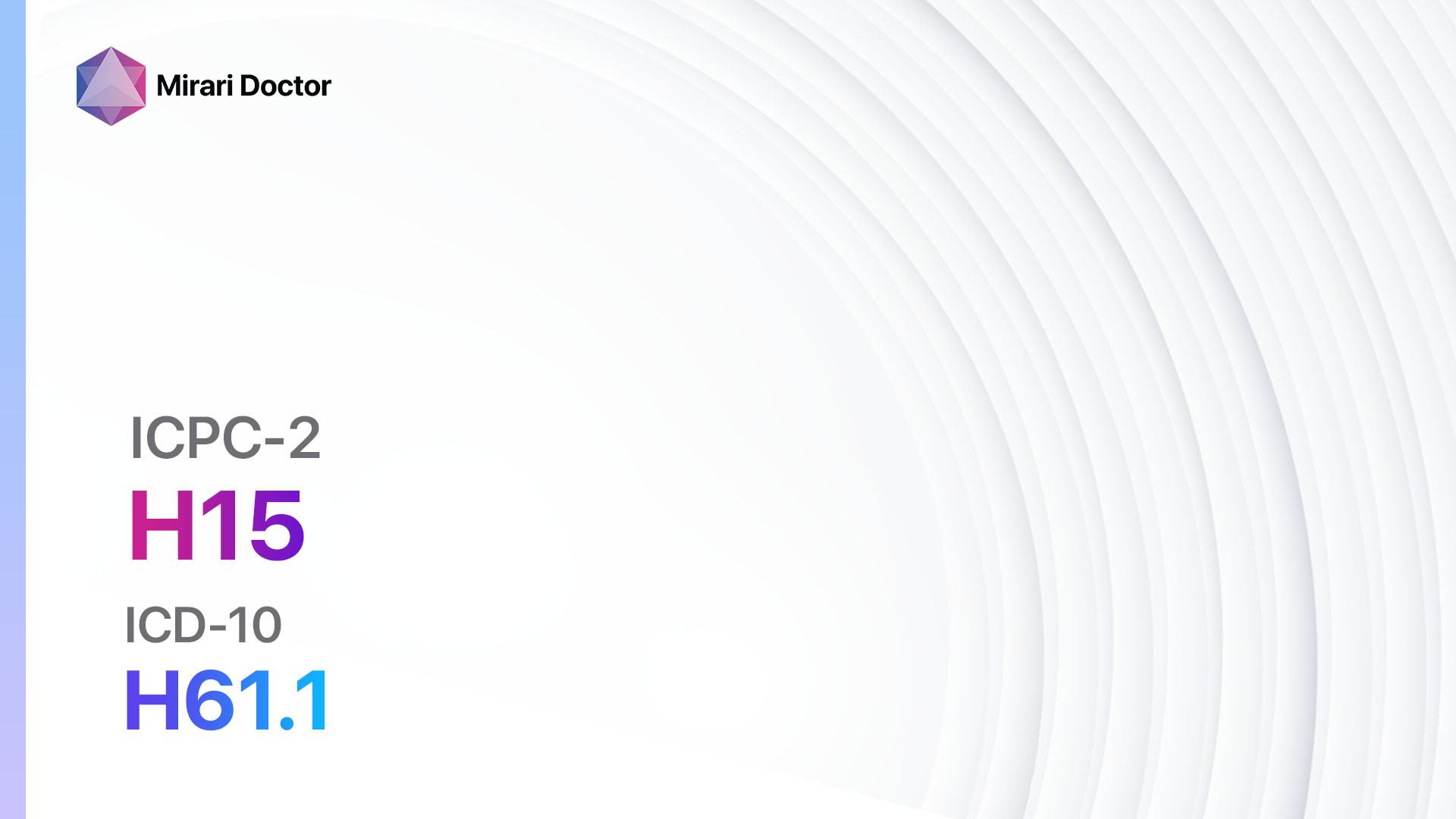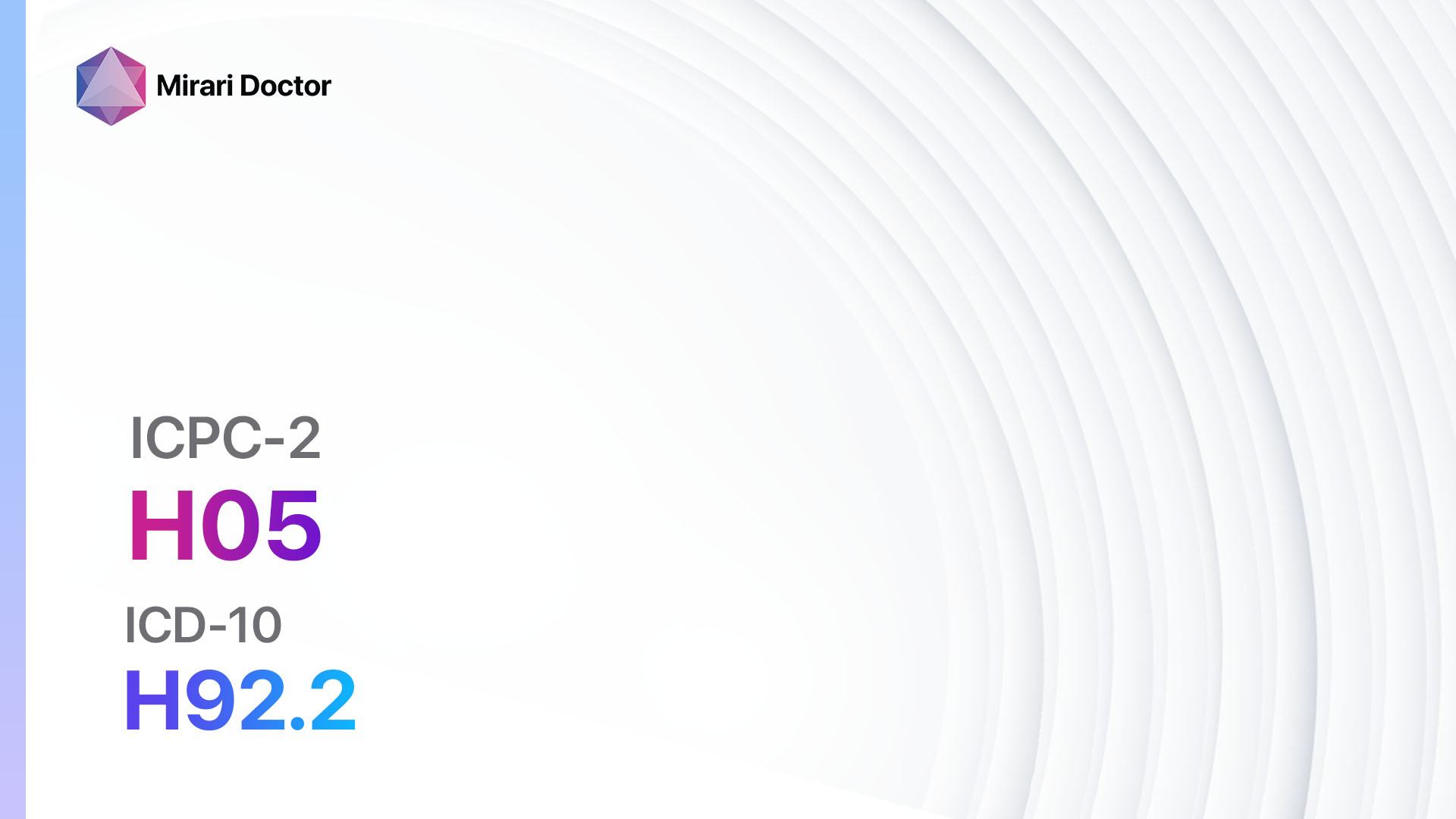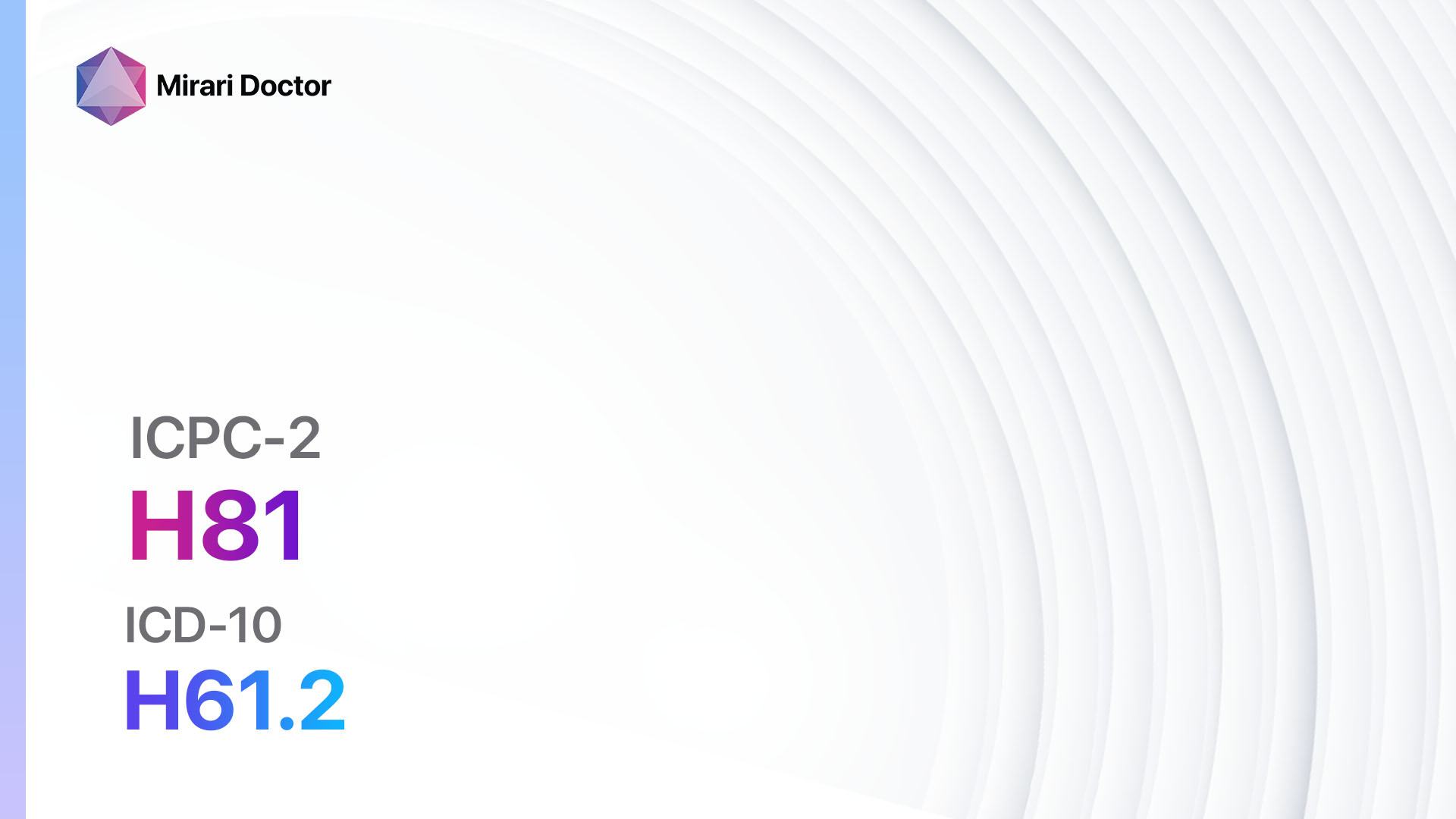
Introduction
Excessive ear wax, also known as cerumen impaction, occurs when there is an accumulation of ear wax in the ear canal. This can lead to symptoms such as hearing loss, earache, tinnitus, and dizziness.[1] The aim of this guide is to provide healthcare professionals with a comprehensive overview of the diagnostic steps, possible interventions, and patient education for excessive ear wax.
Codes
Symptoms
- Hearing loss: Patients may experience a decrease in their ability to hear sounds clearly.[2]
- Earache: Pain or discomfort in the ear.[3]
- Tinnitus: A ringing, buzzing, or hissing sound in the ear.[4]
- Dizziness: A sensation of spinning or lightheadedness.[5]
Causes
- Overproduction of ear wax: Some individuals naturally produce more ear wax than others.[6]
- Impacted ear wax: Ear wax can become impacted and block the ear canal due to improper cleaning or the use of objects such as cotton swabs.[7]
Diagnostic Steps
Medical History
- Inquire about the patient’s symptoms, including hearing loss, earache, tinnitus, and dizziness[8].
- Ask about any previous episodes of excessive ear wax or ear infections.
- Determine if the patient has a history of using cotton swabs or other objects to clean their ears.
Physical Examination
- Inspect the external ear for signs of inflammation, redness, or swelling.
- Examine the ear canal using an otoscope to visualize the ear wax and assess for any blockage.[9]
- Perform a hearing test to evaluate the extent of hearing loss.
Laboratory Tests
- No specific laboratory tests are required for the diagnosis of excessive ear wax.
Diagnostic Imaging
- No diagnostic imaging is typically necessary for the diagnosis of excessive ear wax.
Other Tests
- In some cases, a tympanometry test may be performed to assess the movement of the eardrum and determine if there is any middle ear pathology.[10]
Follow-up and Patient Education
- Advise the patient on proper ear hygiene, including avoiding the use of cotton swabs or other objects to clean the ears.
- Educate the patient on the signs and symptoms of excessive ear wax and when to seek medical attention.
- Schedule a follow-up appointment to monitor the patient’s symptoms and ensure the effectiveness of the chosen intervention.
Possible Interventions
Traditional Interventions
Medications:
Top 5 drugs for excessive ear wax:
- Earwax softeners (e.g., Carbamide peroxide, Triethanolamine polypeptide oleate-condensate):
- Cost: $5-$15 for a 15ml bottle.
- Contraindications: Hypersensitivity to the ingredients.
- Side effects: Temporary ear discomfort, itching, or redness.
- Severe side effects: Allergic reactions.
- Drug interactions: None reported.
- Warning: Do not use if the eardrum is perforated or if there is an active ear infection.
- Ear drops (e.g., Hydrogen peroxide, Baby oil):
- Cost: $5-$10 for a 15ml bottle.
- Contraindications: Hypersensitivity to the ingredients.
- Side effects: Temporary ear discomfort or itching.
- Severe side effects: Allergic reactions.
- Drug interactions: None reported.
- Warning: Do not use if the eardrum is perforated or if there is an active ear infection.
- Ear irrigation solutions (e.g., Sodium bicarbonate, Saline solution):
- Cost: $5-$15 for a 30ml bottle.
- Contraindications: Hypersensitivity to the ingredients, eardrum perforation, active ear infection.
- Side effects: Temporary ear discomfort or dizziness.
- Severe side effects: Allergic reactions, damage to the eardrum.
- Drug interactions: None reported.
- Warning: Use with caution in patients with a history of ear surgery or ear problems.
- Steroid ear drops (e.g., Dexamethasone, Hydrocortisone):
- Cost: $10-$20 for a 5ml bottle.
- Contraindications: Hypersensitivity to the ingredients, eardrum perforation, active ear infection.
- Side effects: Temporary ear discomfort or itching.
- Severe side effects: Allergic reactions, damage to the eardrum.
- Drug interactions: None reported.
- Warning: Use with caution in patients with a history of ear surgery or ear problems.
- Antibiotic ear drops (e.g., Neomycin, Polymyxin B):
- Cost: $10-$20 for a 5ml bottle.
- Contraindications: Hypersensitivity to the ingredients, eardrum perforation, active ear infection.
- Side effects: Temporary ear discomfort or itching.
- Severe side effects: Allergic reactions, damage to the eardrum.
- Drug interactions: None reported.
- Warning: Use with caution in patients with a history of ear surgery or ear problems.
Alternative Drugs:
- Olive oil: Can be used as an alternative to commercial ear drops. Cost: $5-$10 for a 30ml bottle.
- Glycerin: Can help soften ear wax. Cost: $5-$10 for a 30ml bottle.
- Hydrogen peroxide: Can be used to loosen ear wax. Cost: $5-$10 for a 30ml bottle.
- Baby oil: Can help lubricate the ear canal. Cost: $5-$10 for a 30ml bottle.
- Mineral oil: Can be used to soften ear wax. Cost: $5-$10 for a 30ml bottle.
Surgical Procedures:
- Ear irrigation: A healthcare professional uses a syringe or a specialized irrigation device to flush out the ear wax with water or a saline solution. Cost: $50-$100 per session.
- Manual removal: A healthcare professional uses specialized instruments, such as a curette or forceps, to manually remove the ear wax. Cost: $75-$150 per session.
Alternative Interventions
- Ear candling: Involves placing a hollow candle in the ear and lighting it to create a vacuum effect. Cost: $20-$40 per session.
- Warm water irrigation: The patient can use a bulb syringe or a specialized irrigation device to flush out the ear wax with warm water. Cost: $10-$20 for the equipment.
- Ear picks: Small tools with a curved end that can be used to gently remove ear wax. Cost: $5-$10 for a set of ear picks.
- Ear wax removal kits: Over-the-counter kits that contain ear drops and tools for removing ear wax. Cost: $10-$20 per kit.
- Ear suction devices: Handheld devices that use suction to remove ear wax. Cost: $20-$50 for the device.
Lifestyle Interventions
- Avoid using cotton swabs: Advise the patient to avoid inserting cotton swabs or other objects into the ear canal, as this can push the ear wax further in and cause impaction. Cost: Free.
- Ear hygiene: Encourage the patient to clean the outer ear with a washcloth or tissue, but to avoid inserting anything into the ear canal. Cost: Free.
- Ear drops: Regular use of ear drops, such as olive oil or glycerin, can help prevent the accumulation of ear wax. Cost: $5-$10 for a 30ml bottle.
- Regular ear cleaning: Suggest regular visits to a healthcare professional for professional ear cleaning. Cost: $50-$100 per session.
- Humidifier: Using a humidifier in the home can help prevent dryness in the ear canal and reduce the risk of excessive ear wax. Cost: $20-$100 for a humidifier.
It is important to note that the cost ranges provided are approximate and may vary depending on the location and availability of the interventions.
Mirari Cold Plasma Alternative Intervention
Understanding Mirari Cold Plasma
- Safe and Non-Invasive Treatment: Mirari Cold Plasma is a safe and non-invasive treatment option for various skin conditions. It does not require incisions, minimizing the risk of scarring, bleeding, or tissue damage.
- Efficient Extraction of Foreign Bodies: Mirari Cold Plasma facilitates the removal of foreign bodies from the skin by degrading and dissociating organic matter, allowing easier access and extraction.
- Pain Reduction and Comfort: Mirari Cold Plasma has a local analgesic effect, providing pain relief during the treatment, making it more comfortable for the patient.
- Reduced Risk of Infection: Mirari Cold Plasma has antimicrobial properties, effectively killing bacteria and reducing the risk of infection.
- Accelerated Healing and Minimal Scarring: Mirari Cold Plasma stimulates wound healing and tissue regeneration, reducing healing time and minimizing the formation of scars.
Mirari Cold Plasma Prescription
Video instructions for using Mirari Cold Plasma Device – H81 Excessive ear wax (ICD-10:H61.2)
| Mild | Moderate | Severe |
| Mode setting: 1 (Infection) Location: 0 (Localized) Morning: 15 minutes, Evening: 15 minutes |
Mode setting: 1 (Infection) Location: 0 (Localized) Morning: 30 minutes, Lunch: 30 minutes, Evening: 30 minutes |
Mode setting: 1 (Infection) Location: 0 (Localized) Morning: 30 minutes, Lunch: 30 minutes, Evening: 30 minutes |
| Mode setting: 2 (Wound Healing) Location: 0 (Localized) Morning: 15 minutes, Evening: 15 minutes |
Mode setting: 2 (Wound Healing) Location: 0 (Localized) Morning: 30 minutes, Lunch: 30 minutes, Evening: 30 minutes |
Mode setting: 2 (Wound Healing) Location: 0 (Localized) Morning: 30 minutes, Lunch: 30 minutes, Evening: 30 minutes |
| Mode setting: 3 (Antiviral Therapy) Location: 0 (Localized) Morning: 15 minutes, Evening: 15 minutes |
Mode setting: 3 (Antiviral Therapy) Location: 0 (Localized) Morning: 30 minutes, Lunch: 30 minutes, Evening: 30 minutes |
Mode setting: 3 (Antiviral Therapy) Location: 0 (Localized) Morning: 30 minutes, Lunch: 30 minutes, Evening: 30 minutes |
| Total Morning: 45 minutes approx. $7.50 USD, Evening: 45 minutes approx. $7.50 USD |
Total Morning: 90 minutes approx. $15 USD, Lunch: 90 minutes approx. $15 USD, Evening: 90 minutes approx. $15 USD, |
Total Morning: 90 minutes approx. $15 USD, Lunch: 90 minutes approx. $15 USD, Evening: 90 minutes approx. $15 USD, |
| Usual treatment for 7-60 days approx. $105 USD – $900 USD | Usual treatment for 6-8 weeks approx. $1,890 USD – $2,520 USD |
Usual treatment for 3-6 months approx. $4,050 USD – $8,100 USD
|
 |
|
Use the Mirari Cold Plasma device to treat Excessive ear wax effectively.
WARNING: MIRARI COLD PLASMA IS DESIGNED FOR THE HUMAN BODY WITHOUT ANY ARTIFICIAL OR THIRD PARTY PRODUCTS. USE OF OTHER PRODUCTS IN COMBINATION WITH MIRARI COLD PLASMA MAY CAUSE UNPREDICTABLE EFFECTS, HARM OR INJURY. PLEASE CONSULT A MEDICAL PROFESSIONAL BEFORE COMBINING ANY OTHER PRODUCTS WITH USE OF MIRARI.
Step 1: Cleanse the Skin
- Start by cleaning the affected area of the skin with a gentle cleanser or mild soap and water. Gently pat the area dry with a clean towel.
Step 2: Prepare the Mirari Cold Plasma device
- Ensure that the Mirari Cold Plasma device is fully charged or has fresh batteries as per the manufacturer’s instructions. Make sure the device is clean and in good working condition.
- Switch on the Mirari device using the power button or by following the specific instructions provided with the device.
- Some Mirari devices may have adjustable settings for intensity or treatment duration. Follow the manufacturer’s instructions to select the appropriate settings based on your needs and the recommended guidelines.
Step 3: Apply the Device
- Place the Mirari device in direct contact with the affected area of the skin. Gently glide or hold the device over the skin surface, ensuring even coverage of the area experiencing.
- Slowly move the Mirari device in a circular motion or follow a specific pattern as indicated in the user manual. This helps ensure thorough treatment coverage.
Step 4: Monitor and Assess:
- Keep track of your progress and evaluate the effectiveness of the Mirari device in managing your Excessive ear wax. If you have any concerns or notice any adverse reactions, consult with your health care professional.
Note
This guide is for informational purposes only and should not replace the advice of a medical professional. Always consult with your healthcare provider or a qualified medical professional for personal advice, diagnosis, or treatment. Do not solely rely on the information presented here for decisions about your health. Use of this information is at your own risk. The authors of this guide, nor any associated entities or platforms, are not responsible for any potential adverse effects or outcomes based on the content.
Mirari Cold Plasma System Disclaimer
- Purpose: The Mirari Cold Plasma System is a Class 2 medical device designed for use by trained healthcare professionals. It is registered for use in Thailand and Vietnam. It is not intended for use outside of these locations.
- Informational Use: The content and information provided with the device are for educational and informational purposes only. They are not a substitute for professional medical advice or care.
- Variable Outcomes: While the device is approved for specific uses, individual outcomes can differ. We do not assert or guarantee specific medical outcomes.
- Consultation: Prior to utilizing the device or making decisions based on its content, it is essential to consult with a Certified Mirari Tele-Therapist and your medical healthcare provider regarding specific protocols.
- Liability: By using this device, users are acknowledging and accepting all potential risks. Neither the manufacturer nor the distributor will be held accountable for any adverse reactions, injuries, or damages stemming from its use.
- Geographical Availability: This device has received approval for designated purposes by the Thai and Vietnam FDA. As of now, outside of Thailand and Vietnam, the Mirari Cold Plasma System is not available for purchase or use.
References
- Schwartz SR, et al. Clinical practice guideline (update): Earwax (cerumen impaction). Otolaryngol Head Neck Surg. 2017;156(1_suppl):S1-S29.
- Michaudet C, Malaty J. Cerumen Impaction: Diagnosis and Management. Am Fam Physician. 2018;98(8):525-529.
- Jabor MA, Amedee RG. Cerumen impaction. J La State Med Soc. 1997;149(10):358-62.
- Sugiura S, et al. Effect of cerumen impaction on hearing and cognitive functions in Japanese older adults with cognitive impairment. Geriatr Gerontol Int. 2014;14 Suppl 2:56-61.
- Hauk L. Cerumen Impaction: An Updated Guideline from the AAO-HNSF. Am Fam Physician. 2017;96(4):263-264.
- Okuda I, et al. The organic composition of earwax. J Otolaryngol. 1991;20(3):212-5.
- Zhang S, et al. Cerumen impaction was composed of abnormal exfoliation of keratinocytes that was correlated with infection. Am J Otolaryngol. 2020;41(2):102340.
- Demir E, et al. Otologic Findings Based on no Complaints in a Pediatric Examination. Int Arch Otorhinolaryngol. 2019;23(1):36-40.
- Roland PS, et al. Clinical practice guideline: Cerumen impaction. Otolaryngol Head Neck Surg. 2008;139(3 Suppl 2):S1-S21.
- Clegg AJ, et al. The safety and effectiveness of different methods of earwax removal: a systematic review and economic evaluation. Health Technol Assess. 2010;14(28):1-192.
Related articles
Made in USA


